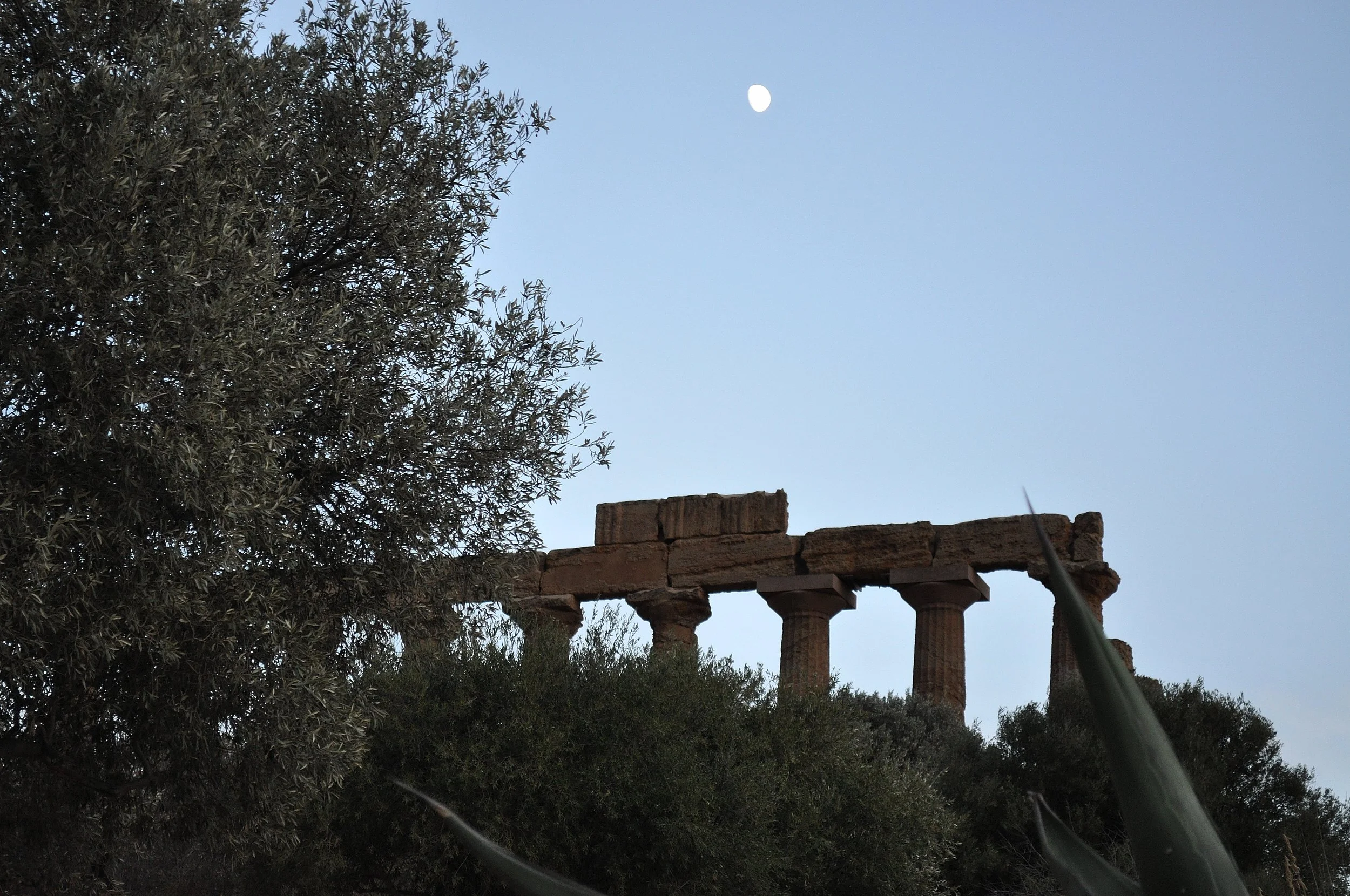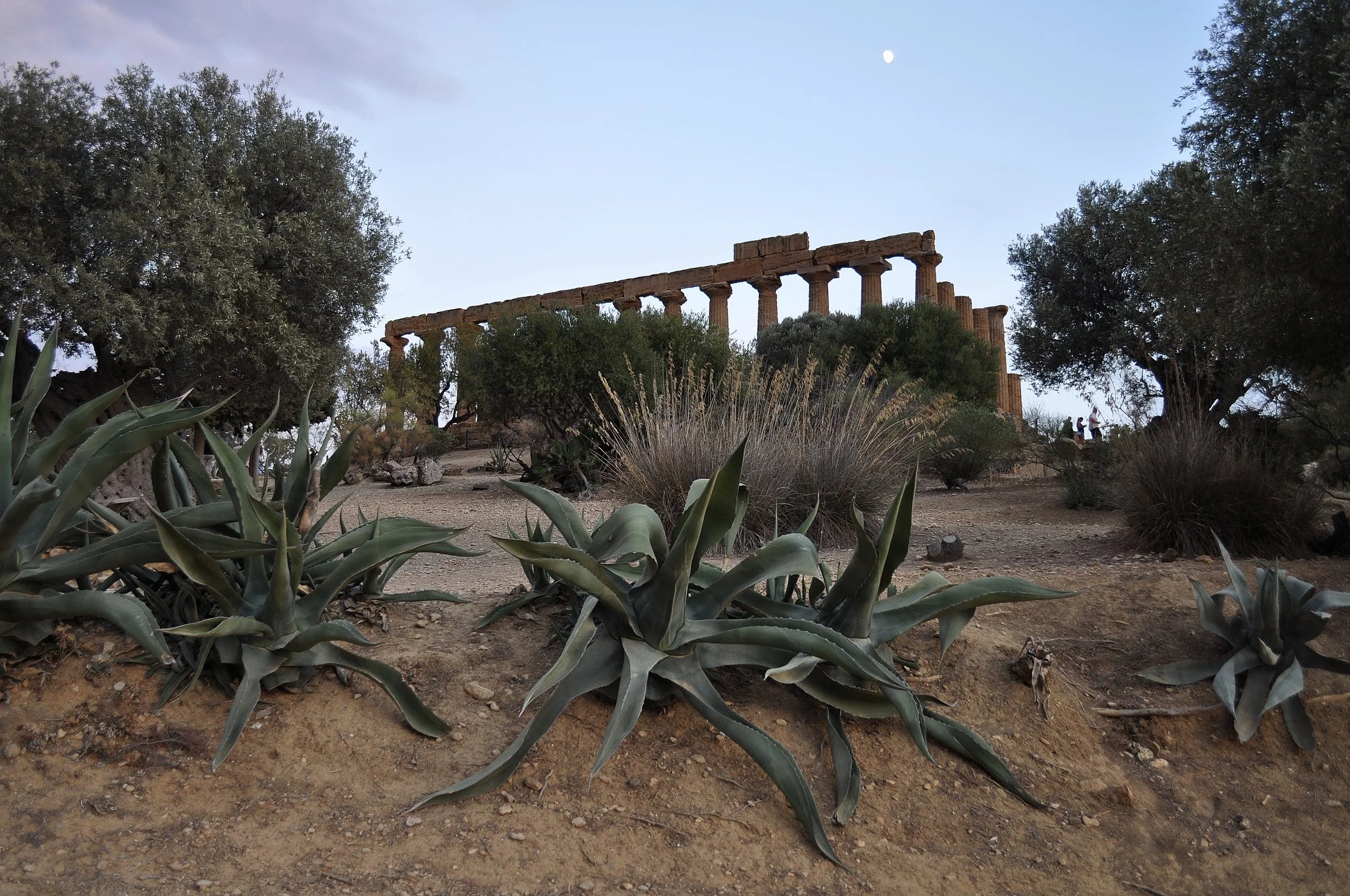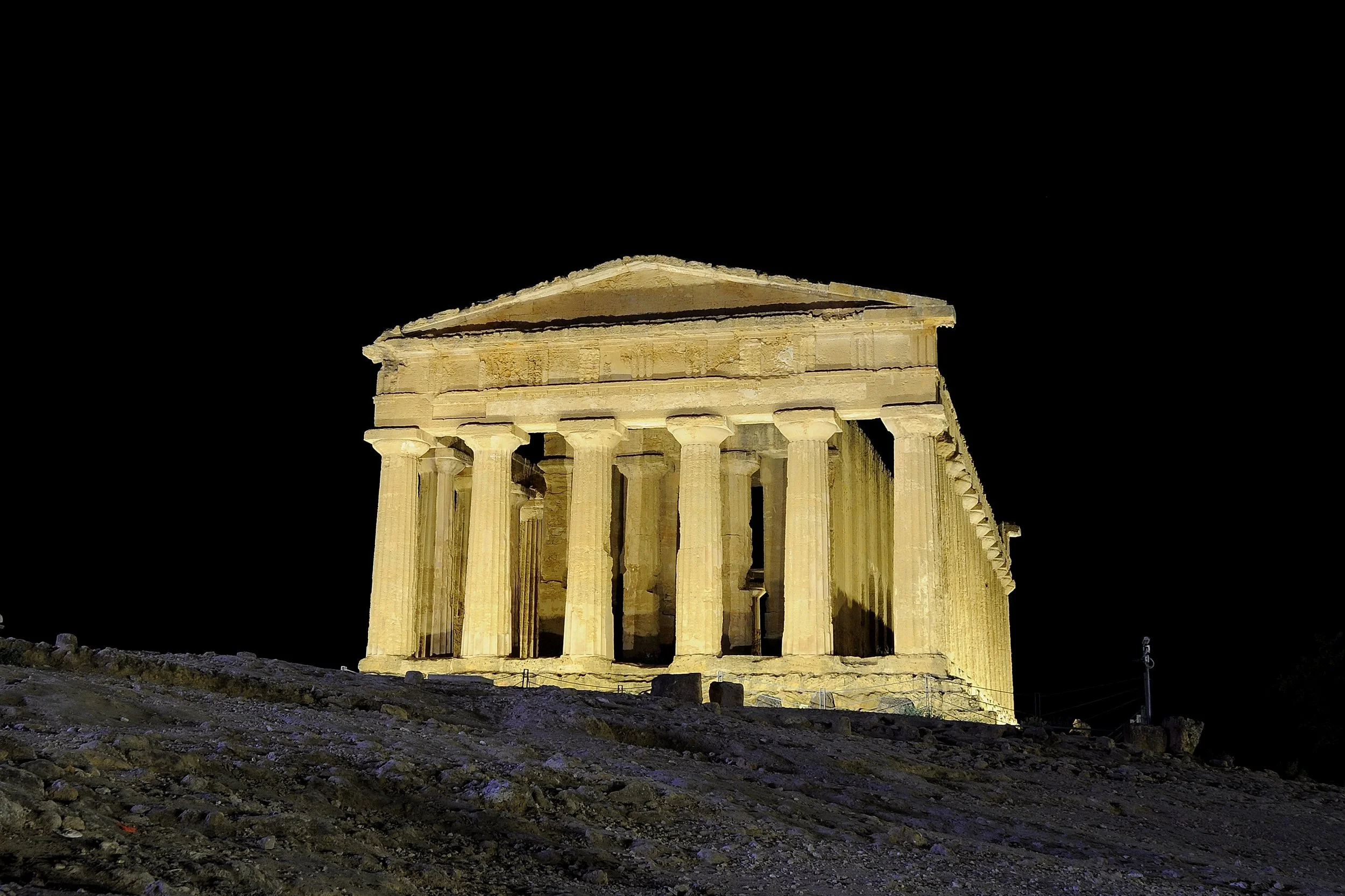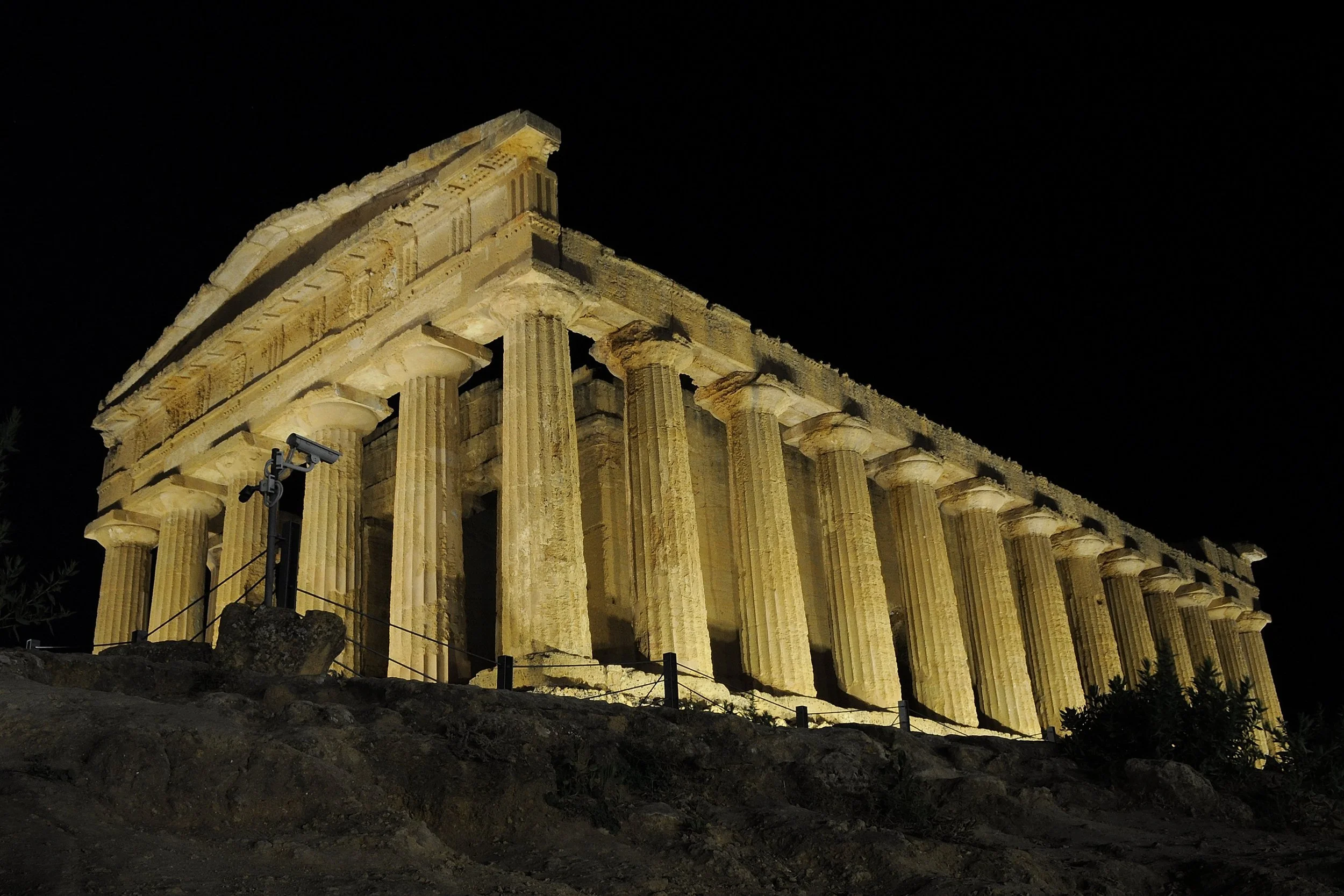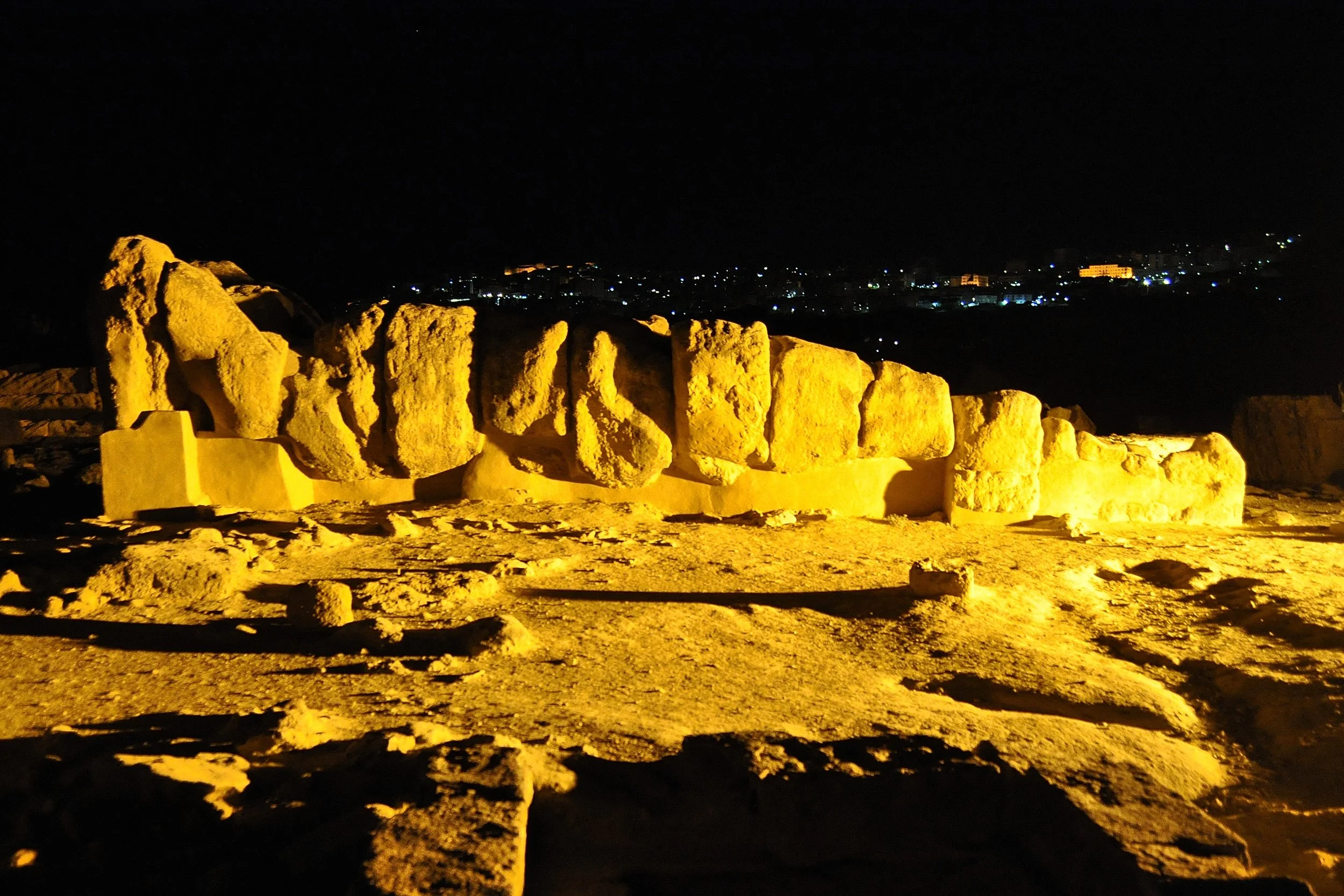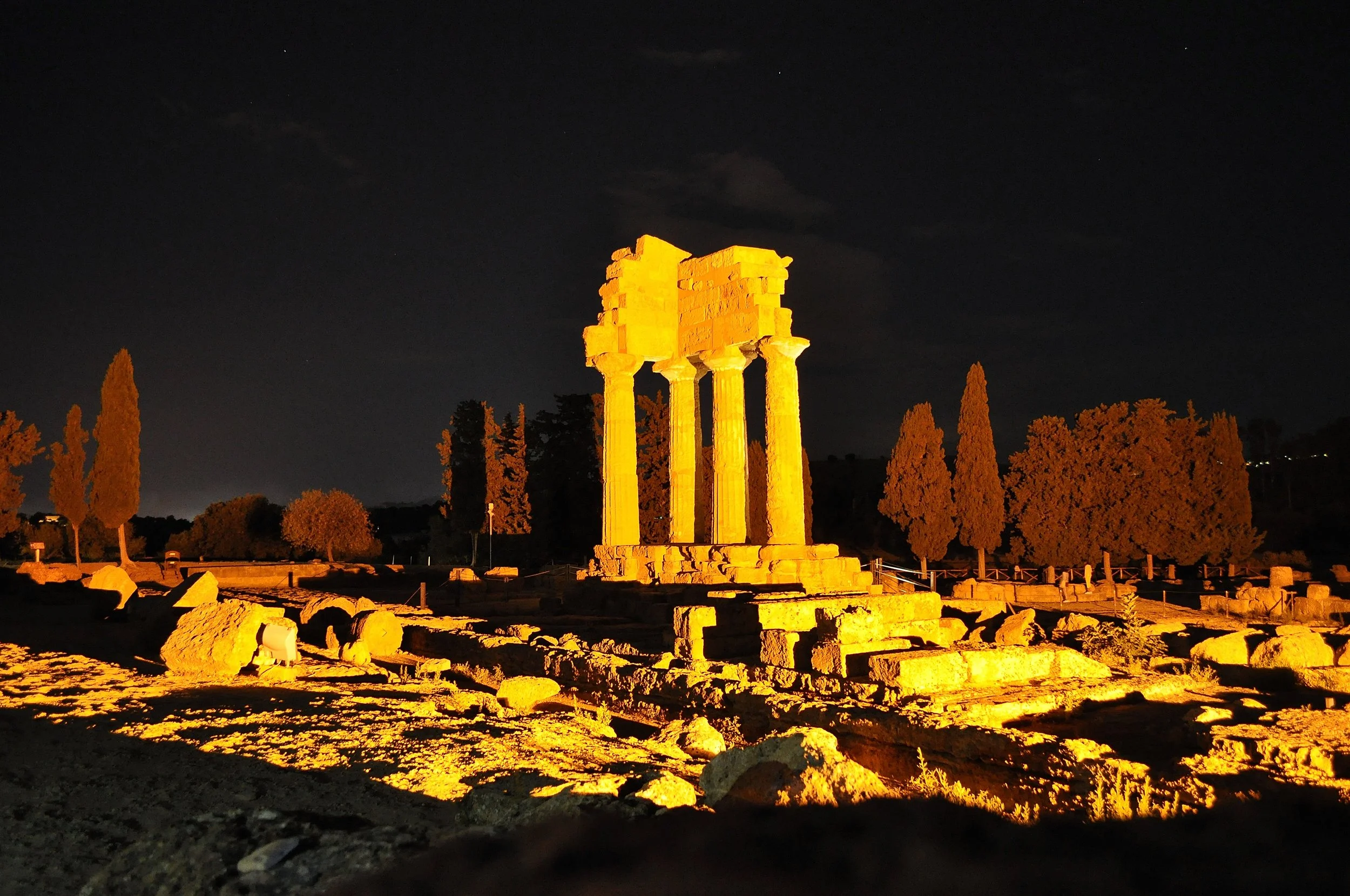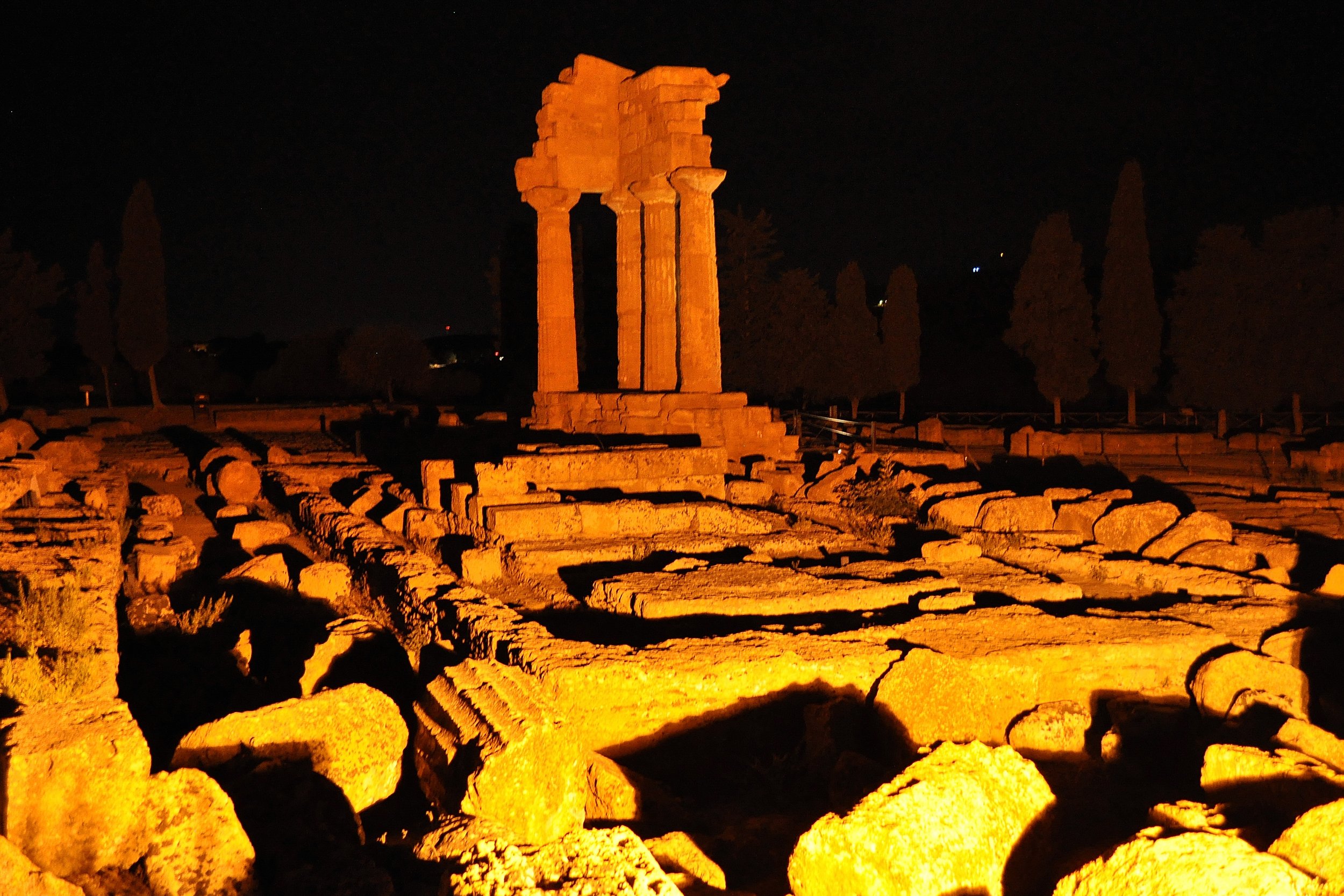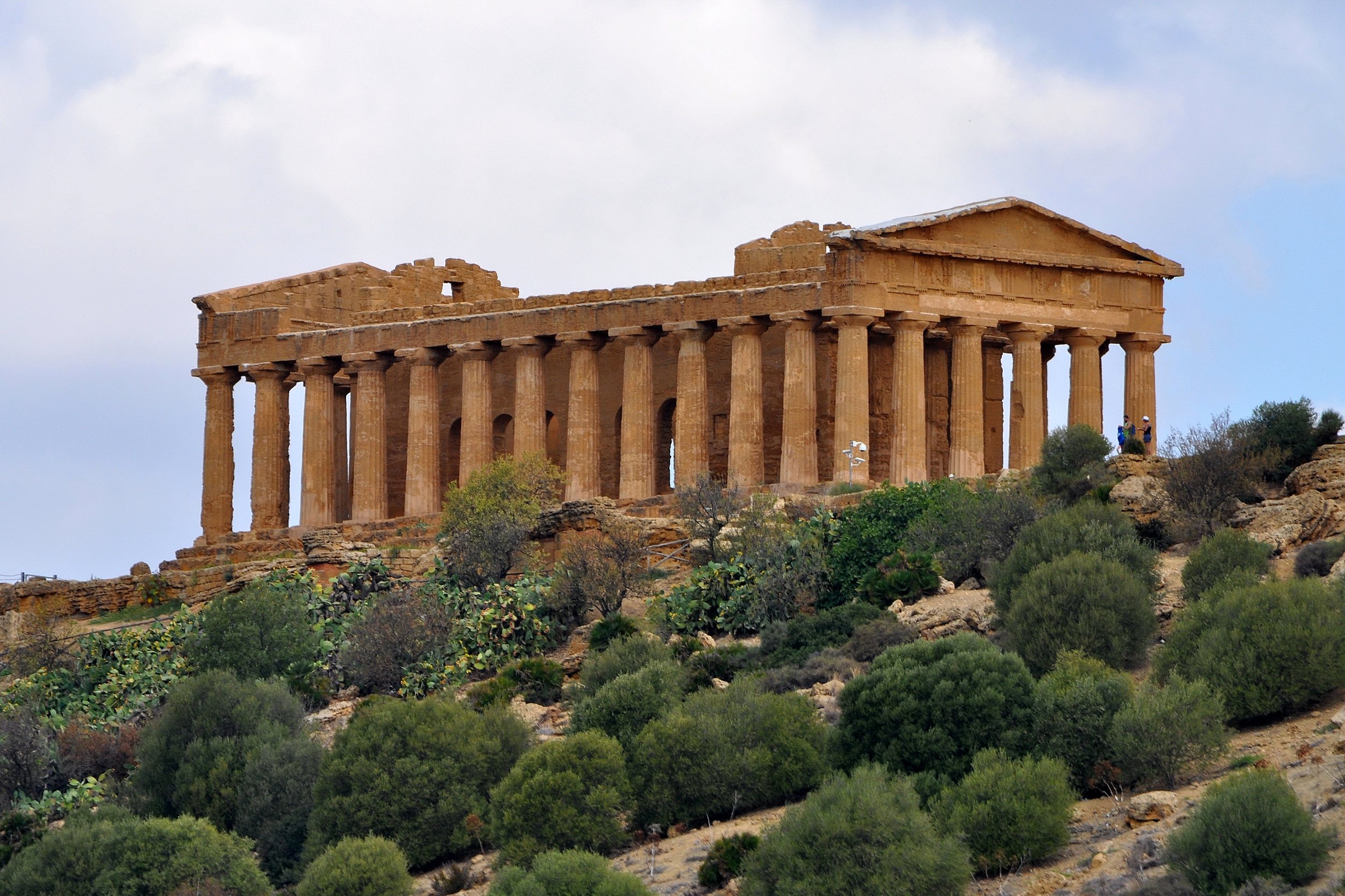The Valley of the Temples
Alberto: welcome back to Sicily, my friends; it’s time to start up the van again! Tonight I’m taking you to a place like no other: the Valley of the Temples in Agrigento. We’ll see it at night, when silence turns it into a dream of stone and light.
Angela: a night visit? That must be incredible.
Piero: you’ve already won me over! The valley is already a dream—known everywhere as one of the symbols of this land. When darkness falls and the moon reflects on the columns, I can already picture the temples coming alive.
Alberto: look outside, the road along the valley opens up between almond trees, olive groves, and golden fields. The air smells of wild herbs, and the sea isn’t far away. In the distance, the lights of Agrigento flicker like stars on the hill, and right below, among the shadows, you’ll see the valley appear. By day it’s magnificent, but at night… it feels as if time stands still.
Angela: down there, those golden shapes glowing in the dark… are those the temples already?
Piero: yes. It’s as if the light were trapped inside the stone.
Alberto: welcome to the Valley of the Temples. We’ll leave the van here. We’ll walk along the Sacred Way, the very same path that Greek pilgrims walked more than two thousand years ago.
From Akragas to Agrigento
Angela: how did this marvel come to be?
Alberto: it all begins around 580 B.C., when settlers from Gela—Greeks from Rhodes and Crete—founded Akragas. It was a strategic location, between two rivers, overlooking the sea, with a hill offering ideal natural defense. In a short time, the city became one of the richest and most powerful in Magna Graecia.
Piero: the Greek poet Pindar described it as “the most beautiful of all mortal cities.”
Angela: it must have been magnificent, full of temples, theaters, and statues. Pure art and wonder.
Piero: exactly. Akragas reached its peak in the 5th century B.C., under the tyrant Theron. That’s when most of the temples we see today were built. But in 406 B.C., the Carthaginians nearly completely destroyed it. Yet the city did not die: it was rebuilt and continued to thrive under the Romans, Byzantines, and Arabs, eventually becoming Agrigento.
Angela: and today the park is enormous, isn’t it?
Piero: yes, over 1,300 hectares. It’s one of the largest archaeological sites of the ancient world and, since 1997, it has been a UNESCO World Heritage Site.
Angela: incredible to think that after twenty-five centuries, these temples are still here, almost intact, telling the story of a people who knew how to unite faith, art, and mathematics.
Piero: and reminding us, once again, that Sicily, more than any other land, is a bridge between civilizations.
The night of the gods: the path among the temples
Angela: we’re ready to start our visit, beginning from the eastern side of the hill.
Alberto: look up there, on the eastern hill. That is the Temple of Juno, or Hera Lacinia. Built around 450 B.C., it dominates the entire valley.
Angela: it looks like a burning flame. The columns shine as if the stone itself trapped the sunlight.
Piero: there are thirty-four of them, in Doric style, perfectly proportioned. Rituals related to marriage and fertility were celebrated here. During the Carthaginian attack, the temple was set on fire, and you can still see burn marks on the stones. Yet it still stands, proud, suspended between earth and sky.
Alberto: let’s follow the path: here is the Temple of Hercules, or Heracles. It’s the oldest, dating back to 510 B.C., and only part of it remains, with eight columns reconstructed in the 19th century.
Angela: even like this, it’s impressive. The play of light and shadow on the columns makes them look like sleeping giants.
Piero: it was dedicated to the hero symbolizing strength and courage. The ancients brought offerings here to seek his protection.
Angela: from here you can see the entire valley, dotted with lights. And down there, that larger, perfect temple?
Piero: that is the Temple of Concordia. It’s the best-preserved of them all. Built in the 5th century B.C., with six columns on the front and thirteen on the sides, it’s a masterpiece of Doric balance. It has remained almost intact because in the 6th century A.D. it was transformed into a Christian basilica. When illuminated by the moon, it seems to breathe.
Angela: each column seems to move, as if it had a soul.
Piero: the Greeks believed that architectural harmony was a form of prayer. Here, we have proof of that.
Angela: and that vast field further ahead?
Piero: that’s where the Temple of Olympian Zeus stood, the largest of them all. Measuring 112 meters long and 20 meters high, it was built with half-columns attached to pillars and decorated with colossal statues of men, the Telamons, supporting the architrave. After its destruction, the blocks were reused, and today only one lies on the ground, but just looking at it gives you an idea of how imposing it must have been.
Angela: it seems impossible that humans could have built something like this 2,500 years ago.
Piero: Akragas was a dream of stone and pride. And further ahead, look—the one with the four isolated columns is the Temple of the Dioscuri.
Angela: Castor and Pollux, the divine twins. It’s beautiful, even if reconstructed.
Piero: a symbol of Agrigento. The Dioscuri represent the eternal bond between brothers and the connection between sky and sea. Every time I look at it, I think about how ancient myths still speak to us today.
Angela: and in that lower area, among the rocks and grass, what is there?
Piero: the sanctuary of the chthonic deities, connected to Demeter and Persephone, goddesses of fertility and the underworld. Night rituals were performed here, with torches and chants, to celebrate the cycle of the seasons. It’s one of the most evocative places in the valley, where you can feel the delicate boundary between life and rebirth.
Angela: the night amplifies everything: the sounds, the scents, the memories. It feels as if we are suspended between past and present.
Piero: and perhaps that is the true secret of the Valley of the Temples: a place where the gods sleep, but have never stopped listening.
Angela: Alberto, thank you for this visit. At night, the valley is pure poetry.
Alberto: in Sicily, every stone tells a story. But here, among the shadows of the temples, history itself breathes.
Piero: then let’s come back tomorrow, in the sunlight. I want to see whether the valley is more beautiful at sunrise or at sunset.
Angela: for me, it’s perfect right now. Here, in the silence, under the stars, among the voices of the centuries.


